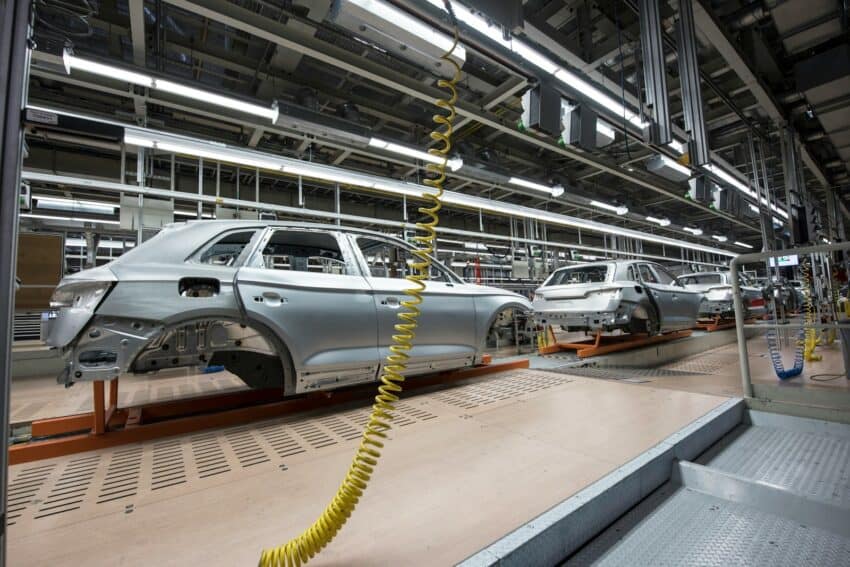In the world of lean manufacturing, “Muda” is the Japanese word for waste — activities that drain time, money, and resources without adding any value to the final product. If you’re in auto manufacturing, eliminating Muda isn’t just a “nice-to-have” — it’s crucial for staying competitive, especially as consumers demand faster delivery, higher quality, and more customization than ever before.
Ready to build cars smarter, faster, and leaner? Let’s dive into the eight types of waste — and how to crush them with a lean manufacturing system.
1. Overproduction: When You Build Cars No One Asked For
Overproduction happens when you make more vehicles (or parts) than the market needs at that moment. In auto manufacturing, this means parking lots full of unsold cars — tying up capital, racking up storage fees, and risking obsolescence if models quickly fall out of favor.
Solution: Embrace Just-in-Time (JIT) production. Build vehicles based on actual customer orders and real-time demand signals, not guesswork. Implement systems that synchronize production schedules with dealership sales data, ensuring you’re building exactly what’s needed — no more, no less.
2. Waiting: Your Assembly Line’s Silent Killer
Waiting is any delay that halts progress: workers waiting on parts, machines waiting on maintenance, or vehicles stalled between stations. In auto manufacturing, even a short downtime ripple can cause massive production bottlenecks.
Solution: Tighten up workflows and preventive maintenance routines. Use automated alerts and predictive maintenance tools to fix small problems before they cause line shutdowns. Keep all production cells well-supplied and synchronized with live scheduling systems.
3. Transportation: The Unnecessary Car Ride
Every time a part or product moves unnecessarily between stations or facilities, you’re wasting time, risking damage, and burning money.
Solution: Design smart, lean plant layouts. Group related production processes together. Use automated guided vehicles (AGVs) or conveyor systems for efficient, low-touch movement of car bodies, chassis, and parts — reducing travel distances and risks.
4. Overprocessing: When More Isn’t Better
Overprocessing is when extra effort goes into something without a corresponding increase in value. Maybe it’s polishing interior panels that no customer will ever notice, or applying multiple redundant inspections that slow production.
Solution: Match processes to customer expectations. Standardize processes based on what really matters to end-users (like performance, safety, and fit/finish), not outdated internal checklists. Value stream mapping is a great tool for spotting these oversteps.
5. Inventory: Parking Cash You Can’t Drive
Holding too much inventory — whether it’s steel sheets, engine components, or finished vehicles — ties up cash and floor space. Worse, parts sitting around for too long can become obsolete or damaged.
Solution: Implement lean inventory management. Use systems like Kanban or digital inventory tracking that signal when parts are actually needed. Monitor sales and supplier performance closely to avoid costly stockpiles and slow-moving inventory.
6. Motion: Wear and Tear on Your Workforce
Motion waste is all about unnecessary worker movements — walking too far for tools, awkward reaches for parts, or repetitive bending and twisting on the line. In an auto plant, that not only slows production but also increases injury risks.
Solution: Build ergonomic workstations.Design assembly cells that minimize movement, using tools like adjustable tables, ergonomic lifts, and easily accessible tool storage. Time-and-motion studies can reveal surprising tweaks that speed up work and protect your team’s health.
7. Defects: The (Very Expensive) Do-Over
Every defective weld, misaligned door, or electrical system glitch requires rework — eating up time, labor, and material costs. In automotive manufacturing, even minor defects can snowball into massive warranty costs or brand reputation hits.
Solution: Build quality at every step. Instead of inspecting at the end, install in-line quality checks after critical assembly points. Use automated vision systems and error-proofing (poka-yoke) devices to catch defects early — when they’re cheapest and easiest to fix.
8. Unused Talent: Your Secret Weapon Going Untapped
Finally, one of the most overlooked wastes: not using your people’s skills, ideas, and creativity.
Auto manufacturing workers often have firsthand insights into inefficiencies — but if no one asks, that knowledge stays buried.
Solution: Empower your workforce. Encourage employee feedback sessions, host continuous improvement (Kaizen) events, and recognize ideas that save time or boost quality. When workers feel heard, engagement and innovation soar.
Final Thoughts: Build Lean, Drive Strong
Identifying and eliminating Muda isn’t just about cutting costs — it’s about building a smarter, faster, and more resilient operation.
By taking a fresh look at how waste sneaks into overproduction, waiting, transportation, overprocessing, inventory, motion, defects, and unused talent, auto manufacturers can fine-tune their production processes for maximum efficiency.



